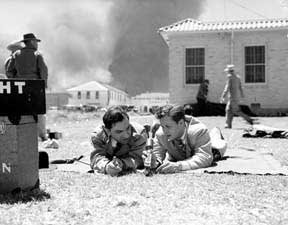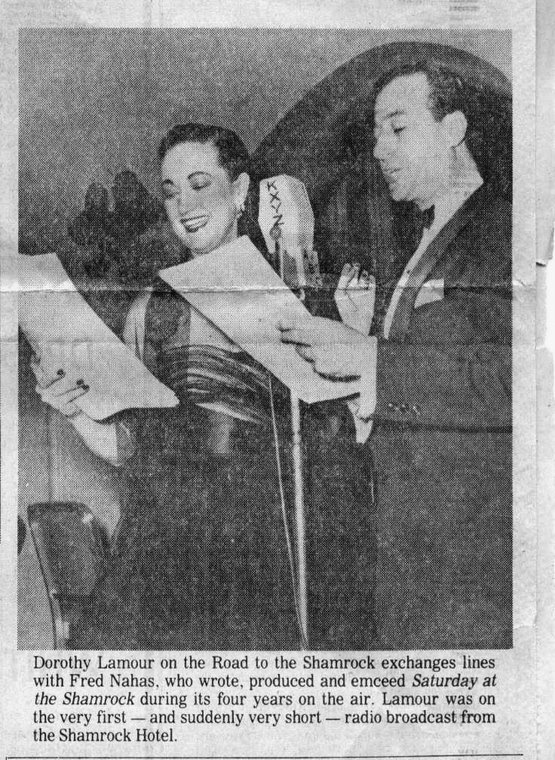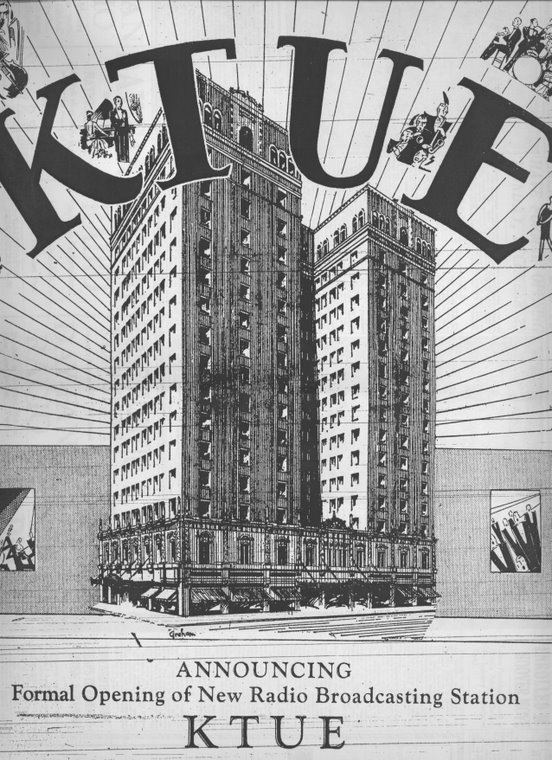The KTHT GI House
Two of the biggest challenges facing the country at the close of World War II were jobs and housing for returning veterans. The Houston City Council declared housing to be the number one problem facing the city in 1946 and the issue was complicated by the shortage of building materials nationwide. Hundreds of vets were housed in trailers on the U of H campus and likewise at Texas A & M in College Station. The government stepped in with public housing projects aimed at veterans - almost a thousand units were announced for Houston - and private builders and developers advertised the suitability and affordability of their houses for veterans.
Roy Hofheinz, who always seemed to me to be as interested in the public service and public affairs aspects of radio as the entertainment and money-making end of the business, came up with a public service project to highlight the crisis: KTHT would undertake to build a house for a veteran's family within a fixed budget and time frame and document the process as it was underway.
Taking into account the effect of wartime inflation on housing prices a budget of $7000 was set and 30 days were allotted to find a site and complete the house but the project ran into problems right away. It took longer than anticipated to locate a suitable lot and the tract settled upon cost more than budgeted but a site was selected on Rice Boulevard in West University Place and representatives of veterans organizations took part in the ground breaking ceremonies on March 22, 1946.
As work progressed KTHT broadcast live from the scene twice daily, 200 half hour programs in all, entitled 'KTHT Builds a GI House' starting on March 19. The station refused to pay black market prices for scarce building materials but also did not want any sympathy donations or price breaks so an anonymous buyer made all the purchases. On a couple of occasions, necessary supplies could not be found at a fair price or at all and work was halted. Then the station would announce the reason for the delay and usually supplies would materialize in a while; again, the station insisted on paying full price in order to insure a fair representation of the difficulties a veteran would face if he or she were to undertake a similar project on their own.
Other media in town took notice of the ongoing effort. All three papers and all three existing radio stations sent reporters to cover the story which also was to garner national attention.
Owing to the materials delays and some weather delays, the project took a couple of weeks longer than anticipated and came in a couple of hundred dollars over budget but by the end of June, 1946, the completed house was sold for $7000, the advertised price, to Robert D. Niemeyer, an ex-Navy pilot and employee of Gulf Oil.
The Houston Chronicle, controlled by Hofheinz' political foe Jesse Jones, published an editorial praising KTHT and Hofheinz for calling attention to the housing problem. It was, according to Hofheinz' biographer, the beginning of a thaw in relations between the two men. City College of New York gave the station an award of merit for the most effective promotion of a public service program in 1946.
The KTHT GI House still stands, 65 years later, on Rice Boulevard, just a couple of blocks off of Weslayan in West U. There was a picture printed in the old Scripps-Howard Press showing the finished house with some KTHT personnel in front but it was not legible enough to use so I didn't even bother to get a copy of it and I am not able to describe all of the changes and alterations that have been made to the house over the years but it is obvious a half story has been added to the original one-story 1940s bungalow. The property originally budgeted at $7000 is now on the Harris County tax rolls appraised at over $450,000.





























